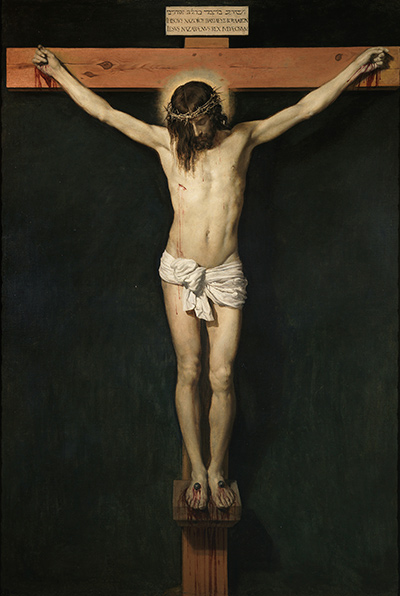The Spanish Golden Age stands as one of the richest and most bountiful eras in history for art, and amongst all of the artists who contributed to it, Diego Velazquez will surely rank as being amongst the most prominent.
Born in 1599, Velázquez was one of the court artists of King Philip IV and crafted a wide range of masterpieces throughout his career. Many of his paintings were portraits of sixteenth-century Spanish nobility, and thanks to him, we have an array of brilliant snapshots into what courtly life of this era looked like. To glance at one of Diego Velazquez's paintings is to be transported into a bygone age.
Not all of Velazquez's paintings depicted contemporary scenes. Like most Western artists of his era, Velazquez had plenty of experience in portraying religious subjects. A number of his canvases depicted scenes of beatification, attempts to portray the divine in all of its sumptuousness.
With "Christ Crucified", however, Velazquez took the opposite approach. The painting is pared-down and understated. There is no background, merely a dark area with a few token shadows to help emphasise the central figure. The cross itself is plain and unadorned, the delicate details - such as the grain in the wood - serving only to emphasise the everyday nature of its materials.
Christ himself is similarly unadorned. Velazquez makes no attempt to portray the agonises of Christ's passion, and simply shows the Messiah's head bowed. His hair runs, like blood, down his face.
The only hint of the divine about this largely unclothed figure is the halo - and even that is relatively modest, a subtle cream-coloured glow. We are asked to look upon this figure - to behold the man - and contemplate his very physicality - his flesh, his hair, the thorns of his crown, the cloth of his coverings, the iron of his nails. The image is composed with geometric evenness and neatness, an understated structure which provides a startling contrast with the significance of the subject matter.
In short, any art lover will find plenty to savour in Diego Velazquez's "Christ Crucified". A print of this masterpiece would be the perfect thing for an enthusiast's home.




